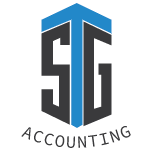Year-End Small Business Accounting Checklist

STG Accounting
November 28, 2022

The countdown to the New Year has begun, and while it’s a busy season for everyone, business owners are entering scramble mode. Unless, of course, you use our year-end accounting checklist to keep you organized and on schedule.
From gathering your income statements and collecting past due invoices to counting inventory and settling debts, we’ll cover everything small business owners need to know so they can coast into 2023.
Ensure Bookkeeping is Current
Bookkeeping is the first item on your year-end small business accounting checklist. Start by reconciling bank and credit card statements with your records. This is the most accurate way to account for missed, double-counted, or improperly classified transactions.
If your bookkeeping isn’t current, this is the best way to get up to date.
Analyze Financial Statements
Now that your books are accurate and up-to-date, it’s time to gather your income, cash flow statements, and balance sheets. These will tell you everything you need to know about the fiscal health of your small business and alleviate the stress of the upcoming tax season.
Income Statement: Income statements offer information about revenue, operating and tax expenses, losses, gains, and depreciation. In short, this document gives you the bottom line, allowing you to compare your yearly earnings with the previous year.
Cash flow Statement: Want to know how much liquid cash flows in and out of your small business? Your cash flow statement will tell you everything you need to know about the financial footing of your small business. In addition, you'll instill more confidence in creditors and investors if it's healthy.
Balance Sheet: This document shows your small businesses' assets, liabilities, and shareholder equity. In simple terms, a balance sheet gives you a snapshot view of what you own and what you owe. As with the cash flow statement, a healthy balance sheet will provide creditors and investors the confidence they need to increase credit lines or further invest.
Don’t Forget Past-Due Invoices
Did a customer neglect an invoice and slip through the cracks? Analyze your books and find out. If you notice any red flags, reach out with an invoice reminder. If you do not receive a response, send a friendly follow-up, set up a repayment plan, or hire a collection agency when all else fails.
Settle Debts
This is a continuation of the previous point. You identified any outstanding customer invoices. Now it's time to look at your debts. Did you forget to pay a vendor? Settle up. Have you neglected outstanding credit card balances with high-interest rates? Transfer that balance to a zero-interest account or, better yet, pay it off. You'll feel a wave of relief stepping into the New Year debt-free.
Assess Your Inventory
Do you want to plan for the New Year? First, assess your inventory to find out what you have and need. Once you complete your assessment, compare the numbers against your balance sheet to maintain accuracy.
Need tax planning or booking assistance? We’re here to help. Contact us today

Bookkeeping
8 Common Bookkeeping Mistakes by Small Businesses

Taxes
10 Tax Season Preparation Tips for Small Businesses

Accounting
Year-End Small Business Accounting Checklist